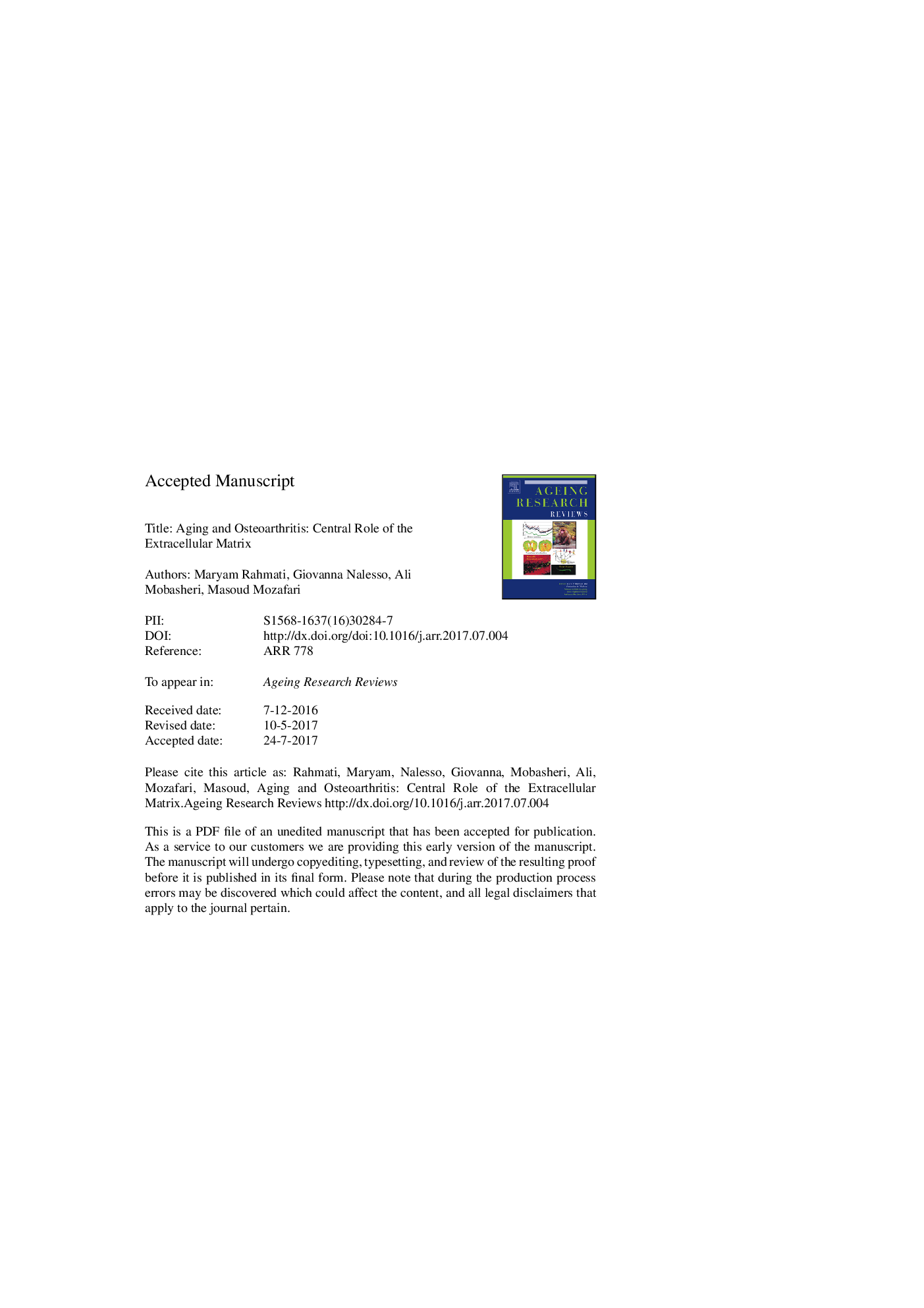| Article ID | Journal | Published Year | Pages | File Type |
|---|---|---|---|---|
| 5500568 | Ageing Research Reviews | 2017 | 39 Pages |
Abstract
Osteoarthritis (OA), is a major cause of severe joint pain, physical disability and quality of life impairment in the aging population across the developed and developing world. Increased catabolism in the extracellular matrix (ECM) of the articular cartilage is a key factor in the development and progression of OA. The molecular mechanisms leading to an impaired matrix turnover have not been fully clarified, however cellular senescence, increased expression of inflammatory mediators as well as oxidative stress in association with an inherently limited regenerative potential of the tissue, are all important contributors to OA development. All these factors are linked to and tend to be maximized by aging. Nonetheless the role of aging in compromising joint stability and function in OA has not been completely clarified yet. This review will systematically analyze cellular and structural changes taking place in the articular cartilage and bone in the pathogenesis of OA which are linked to aging. A particular emphasis will be placed on age-related changes in the phenotype of the articular chondrocytes.
Keywords
ECMFGFRiNOSNF-κBApo-AMMPHMGBIGFproteoglycansRAC-alpha serine/threonine-protein kinaseALKApolipoprotein AAktOsteoarthritisinterleukinforkhead boxAgeArticular cartilageInsulin growth factornuclear factor kappa-light-chain-enhancer of activated B cellsFoxOExtracellular matrixmatrix metalloproteinaseAdvanced glycation end productsBMPBone morphogenetic proteinC-reactive proteinCRPHigh mobility group boxactivin receptor-like kinasefibroblast growth factor receptor
Related Topics
Life Sciences
Biochemistry, Genetics and Molecular Biology
Ageing
Authors
Maryam Rahmati, Giovanna Nalesso, Ali Mobasheri, Masoud Mozafari,
